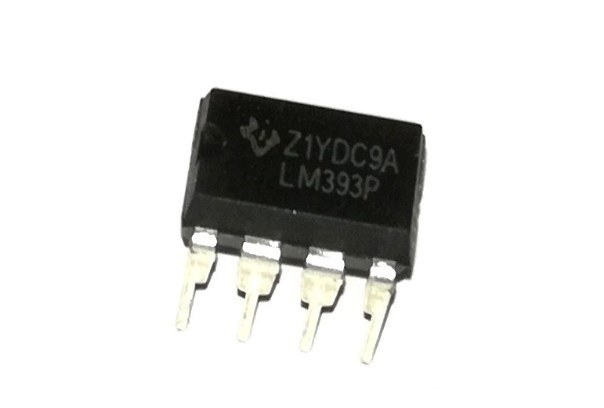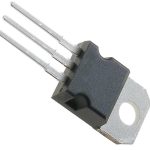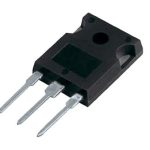LM393, is a widely used IC sensor that operates as a voltage comparator. In this blog, we will delve into all the details you need to know about the LM393, including its special model, features, comparisons with other ICs, and how to use it effectively.
LM393
Introduction
The LM393 is a widely used integrated circuit (IC) sensor that operates as a voltage comparator. It is commonly used in electronic circuits to compare two different input voltages and produce a digital output based on the comparison result. The LM393 is known for its simplicity, low cost, and versatility, making it a popular choice in many applications.
Features
- Dual Comparator: The LM393 contains two independent voltage comparators in a single IC package, allowing for multiple comparisons within a circuit.
- Wide Supply Voltage Range: The LM393 can operate with a wide supply voltage range, typically from 2V to 36V, making it compatible with various power sources.
- Low Input Offset Voltage: The LM393 has a low input offset voltage, which ensures accurate and precise comparisons between input signals.
- Open-Collector Outputs: The IC features open-collector outputs, enabling easy integration with other digital logic circuits and devices.
- High Input Impedance: The LM393 has a high input impedance, minimizing the loading effect on the input signal sources.
LM393 pcb symbol and footprint


LM393 datasheet
To check the datasheet document here: LM393 Datasheet
What is the equivalent of LM393?
An equivalent IC to the LM393 is the LM2903. The LM2903 shares similar functionality and features with the LM393 and can be used as a direct replacement in most applications.
What is LM393 used for?
The LM393 finds applications in various fields due to its versatility. Some common uses include:
- Sensing and Detection: It is employed in sensors and detectors for measuring physical quantities such as temperature, light intensity, humidity, pressure, and proximity.
- Level Detection: It is used in level detection circuits to monitor and control liquid or solid levels in tanks or containers.
- Motor Control: It is utilized in motor control circuits to detect speed, direction, or position of motors, enabling precise control and feedback.
- Alarm Systems: It is employed in alarm systems for intrusion detection, door/window monitoring, and motion sensing.
- Battery Monitoring: It is used in battery monitoring circuits to determine the charge level or voltage of batteries.
How does the LM393 sensor work?
The LM393 operates by comparing two input voltages, V+ and V-. If V+ is greater than V-, the output of the comparator goes high (logic level 1), and if V- is greater than V+, the output goes low (logic level 0). This digital output can be further utilized in various ways depending on the application requirements.
Special Model: LM393DR
Introduction
The LM393DR is a dual voltage comparator integrated circuit. It consists of two independent comparators in a single package, making it ideal for applications where multiple comparisons are required. This special model offers excellent performance and reliability.
Features
- Dual Comparators: It includes two separate comparators, allowing for simultaneous comparison of two different input voltages.
- Wide Supply Voltage Range: It operates over a wide supply voltage range, typically from 2 to 36 volts. This makes it suitable for use with various power sources.
- Low Input Offset Voltage: It has a low input offset voltage, which ensures accurate comparison between the input voltages.
- Open-Collector Outputs: The outputs are open-collector, which means they can be connected directly to other devices or logic circuits.
- High Input Impedance: It has a high input impedance, enabling easy integration with different input sources.
LM393DR pcb symbol and footprint


LM393 datasheet
To check the datasheet document here:LM393DR Datasheet
Comparison with others
What is the difference between LM393 and LM258?
The LM393 and LM258 are both voltage comparators, but there are some key differences between them. The LM258 is a single comparator IC, whereas the LM393 is a dual comparator IC. Additionally, the LM258 has a narrower supply voltage range compared to the LM393. While the LM393 can operate from 2 to 36 volts, the LM258 typically operates from 3 to 32 volts.
What is the difference between LM393 and LM339?
Both the LM393 and LM339 are dual comparators, but there are some variations in their specifications. The LM393 has a wider supply voltage range (2 to 36 volts) compared to the LM339 (2 to 28 volts). Additionally, the LM393 has lower input offset voltage and higher input impedance than the LM339.
What is the difference between LM358 and LM393?
The LM358 is an operational amplifier with two op-amps, while the LM393 is a dual comparator. The primary difference between them is their functionality. The LM358 is used for amplification and signal processing applications, whereas the LM393 is specifically designed for voltage comparison tasks.
How to use the LM393 comparator?
Using the LM393DR comparator is relatively straightforward. Here’s a general guide:
- Connect the power supply: Provide the required power supply voltage within the specified range (typically 2 to 36 volts) to the VCC pin of the LM393DR.
- Connect the inputs: Connect the two input voltages that you want to compare to the IN+ and IN- pins of the respective comparators.
- Set the reference voltage: If needed, connect a reference voltage to one of the inputs to compare against the other input voltage.
- Connect the output: Connect the open-collector outputs (OUT1 and OUT2) to the desired circuit or device. Note that since the outputs are open-collector, you may need to add a pull-up resistor if necessary.
- Monitor the output: Observe the digital output from the comparator to determine the result of the voltage comparison. Typically, a low output indicates that the voltage at IN- is higher than IN+, and a high output indicates the opposite.
Remember to consult the datasheet of the LM393DR for detailed information on pin configurations, electrical characteristics, and recommended operating conditions.

Conclusion
The LM393 is a versatile and reliable IC sensor that plays a crucial role in voltage comparison applications. Its dual comparators, wide supply voltage range, low input offset voltage, open-collector outputs, and high input impedance make it a popular choice among engineers and hobbyists alike. We hope this guide has provided you with a deeper understanding of the LM393 and its various aspects.



